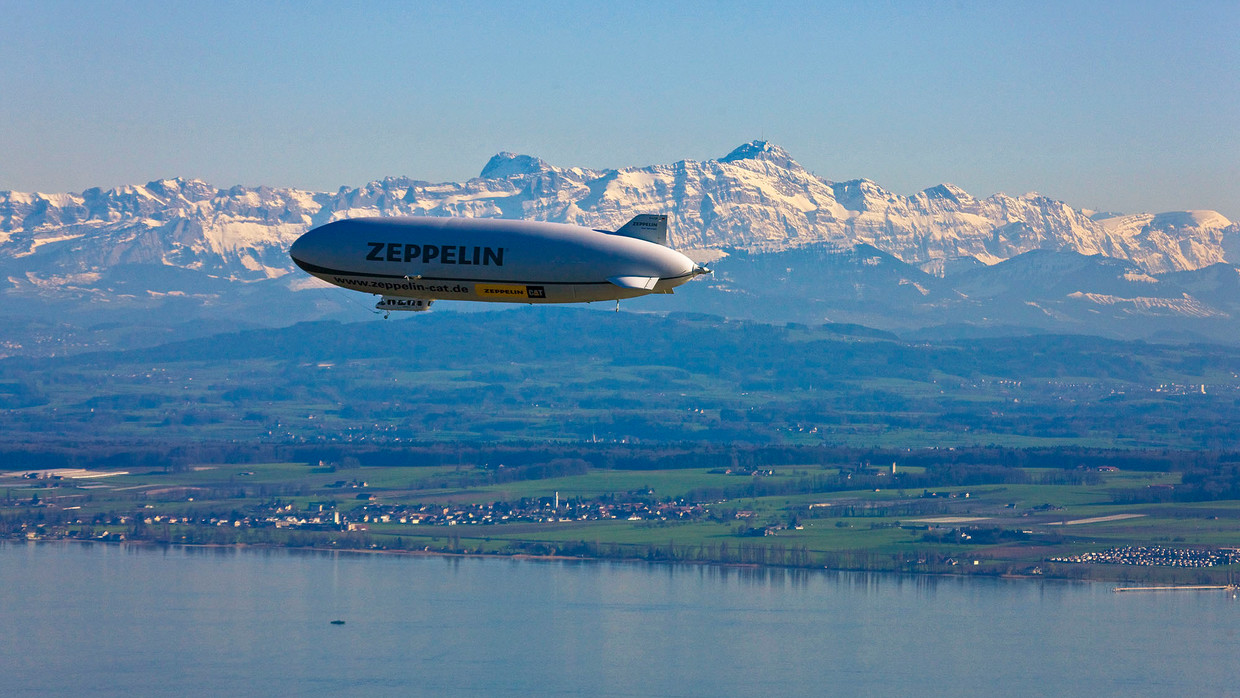
Zeppelins, also known as airships, have a fascinating history and have left an indelible mark on the world of aviation. These colossal flying machines, filled with a lighter-than-air gas such as helium or hydrogen, have captured the imagination of people for over a century. From their early days as luxurious passenger vessels to their military applications during wartime, zeppelins have played a significant role in the evolution of air travel.
In this article, we'll delve into 10 intriguing facts about zeppelins, shedding light on their technological marvel, historical significance, and enduring legacy. Whether you're a history enthusiast, an aviation buff, or simply curious about these majestic airborne behemoths, this exploration of zeppelins is sure to pique your interest. So, fasten your seatbelts (or should we say, hold on to your airship ropes?), as we embark on a journey through the skies of zeppelin knowledge.
Key Takeaways:
- Zeppelins, named after Count Ferdinand von Zeppelin, were once luxurious air travel symbols but faced a setback after the Hindenburg disaster. They played a pivotal role in World War I and continue to inspire modern aerospace innovations.
- Despite the Hindenburg disaster, Zeppelins’ legacy endures, captivating aviation enthusiasts worldwide. Their opulent beginnings, wartime contributions, and potential modern applications showcase human innovation and exploration in the skies.
The Zeppelin airship was named after its inventor, Count Ferdinand von Zeppelin.
Count Ferdinand von Zeppelin, a German general and aircraft manufacturer, is credited with the invention of the Zeppelin airship. His vision and engineering prowess led to the creation of these colossal flying machines, forever imprinting his name in the annals of aviation history.
Zeppelins were once the epitome of luxury air travel.
During the early 20th century, Zeppelins represented the height of luxury air travel. These majestic airships offered spacious cabins, elegant dining rooms, and breathtaking panoramic views, providing an unparalleled travel experience for the elite.
The Hindenburg disaster dealt a severe blow to the reputation of Zeppelins.
On May 6, 1937, the catastrophic explosion of the Hindenburg airship in New Jersey shattered public confidence in Zeppelins. This tragic event, which claimed 36 lives, marked the abrupt end of the era of commercial Zeppelin travel.
Zeppelins played a pivotal role in World War I.
During World War I, Zeppelins were utilized for reconnaissance, bombing missions, and naval patrols. Their ability to navigate above the clouds and evade ground-based defenses made them formidable adversaries in the theater of war.
The Graf Zeppelin circumnavigated the globe in 1929.
Under the command of Dr. Hugo Eckener, the Graf Zeppelin embarked on a groundbreaking circumnavigation of the globe in This monumental achievement showcased the reliability and endurance of Zeppelin airships, further solidifying their status as marvels of aviation engineering.
Zeppelins were powered by internal combustion engines.
The propulsion system of Zeppelins relied on a series of internal combustion engines, which drove multiple propellers to propel the airship through the sky. This innovative engineering feat enabled Zeppelins to achieve impressive speeds and long-distance voyages.
The structure of Zeppelins consisted of a lightweight metal framework.
Zeppelins were constructed using a lightweight metal framework, typically made of aluminum, that provided structural integrity while minimizing overall weight. This advanced design allowed the airship to achieve lift and maintain stability during flight.
The iconic shape of Zeppelins is characterized by their elongated, cylindrical hull.
The distinctive silhouette of Zeppelins is defined by their elongated, cylindrical hull, which houses the gas cells containing the lifting gas, typically hydrogen or helium. This iconic design, coupled with their massive size, made Zeppelins a captivating sight in the skies.
Zeppelins have experienced a resurgence in interest for commercial and military applications.
In recent years, there has been a resurgence of interest in utilizing Zeppelin technology for various commercial and military applications. From cargo transport to surveillance missions, modern adaptations of the classic Zeppelin concept are being explored for their potential in the evolving aerospace industry.
The legacy of Zeppelins continues to captivate the imagination of aviation enthusiasts worldwide.
Despite the passage of time, the legacy of Zeppelins endures as a testament to human ingenuity and the relentless pursuit of innovation in aviation. Their impact on the history of air travel and their enduring allure continue to fascinate and inspire aviation enthusiasts across the globe.
Zeppelins have left an indelible mark on the history of aviation, embodying the spirit of adventure and pushing the boundaries of what was once deemed impossible in the realm of flight. The legacy of these colossal airships, from their opulent beginnings to their pivotal role in wartime endeavors, continues to resonate with enthusiasts and historians alike, serving as a timeless symbol of human innovation and exploration in the skies.
Conclusion
In conclusion, Zeppelins have left an indelible mark on the history of aviation, serving as both a marvel of engineering and a symbol of a bygone era. The grandeur and innovation of these airships continue to captivate the imagination, evoking a sense of nostalgia for a time when the skies were conquered in a different manner. Despite their eventual decline in commercial use, the legacy of Zeppelins endures, inspiring ongoing fascination and interest in their unique place in the evolution of air travel.
FAQs
What were the main advantages of Zeppelins over other aircraft?Zeppelins offered several advantages, including their ability to carry heavy payloads over long distances, their relatively smooth and stable flight, and their capability to operate in adverse weather conditions.
What led to the decline of Zeppelins as a popular mode of transportation?The decline of Zeppelins can be attributed to several factors, including the development of faster and more efficient airplanes, the high-profile disasters such as the Hindenburg tragedy, and the impact of World War II on the airship industry.
Zeppelins have captured imaginations for over a century. Their majestic presence in the skies is undeniable, but there's more to these incredible airships than meets the eye. From their groundbreaking technology to the visionary minds behind them, zeppelins are steeped in history and intrigue. If you're curious about the legendary band that shares its name with these airships, want to explore the life of a guitar virtuoso, or are intrigued by the enigmatic frontman of one of rock's greatest bands, keep reading. We've got plenty more fascinating facts in store for you.
Was this page helpful?
Our commitment to delivering trustworthy and engaging content is at the heart of what we do. Each fact on our site is contributed by real users like you, bringing a wealth of diverse insights and information. To ensure the highest standards of accuracy and reliability, our dedicated editors meticulously review each submission. This process guarantees that the facts we share are not only fascinating but also credible. Trust in our commitment to quality and authenticity as you explore and learn with us.


